What makes LFA so successful?
Little Fire Ants (LFA) can achieve extraordinary population densities. In Hawaiʻi, the average population density in an infested area is 20,000 individuals per square meter. Queen density is also extremely high with an estimated range of 36 to 77 per square meter. The following traits enable LFA to be so successful:
A single nest contains several queens
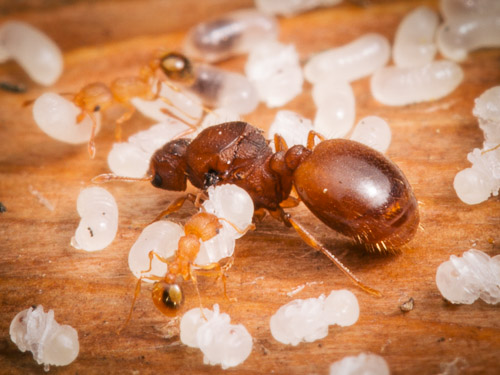
Typically in other ant species, a colony consists of a single queen. The queen is the only ant in the colony able to produce eggs. In these single queen colonies, the death of the queen signals the end of the colony. Without new workers, the colony will decline and die. However, in a colony of LFA with multiple queens, the death of one or more queens has no lasting effect on egg production. Remaining queens simply increase their rate of egg laying to compensate. This feature makes the control of this species especially difficult. Many control methods focus on killing the queen for success. When many queens are present, this task becomes much more difficult.
Formation of supercolonies
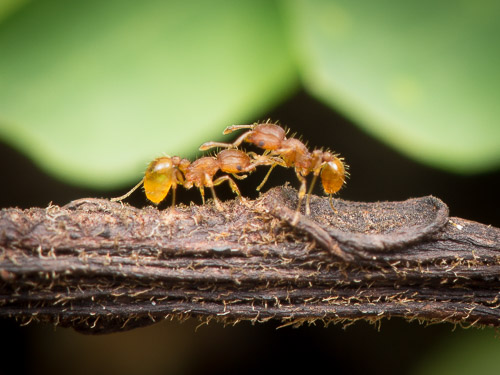
Important to the success of LFA is their formation of supercolonies. While ants are usually highly terrritorial, ants in supercolonies do not show aggression to neighboring colonies of the same species. Instead they work cooperatively by sharing food, workers, brood and queens. This cooperation results in the formation of a massive supercolony with an enormous number of workers that spreads out over a large territory.
Aggression towards other ants
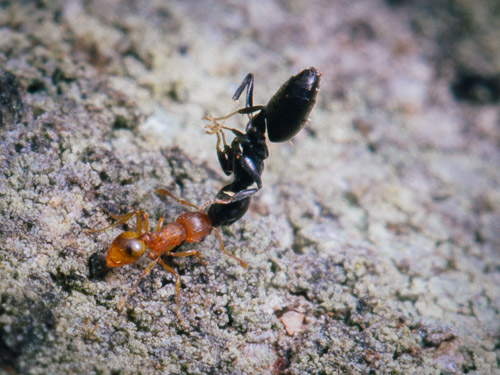
In contrast to the high level of cooperation between neighboring LFA colonies, LFA are highly aggressive to other ant species. Any ant from another species that happens to be within the super-colony is overcome by sheer weight of numbers. It is rare to find colonies of other ant species within areas infested by LFA.
Relationships with plant pests
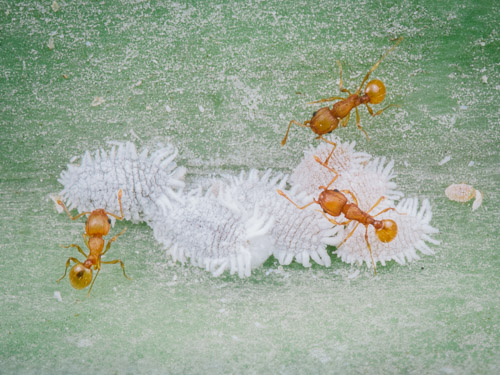
Another vital key to the success of invasive ants are their ability to capture and redirect sources of energy to themselves. One very important method these species utilize is through the formation of mutualistic relationships with scales, mealybugs, and other plant pests. LFA “farm” these sap-sucking insects, protect them from natural predators and consume the sugary exudates they produce. Of all invasive ant species, LFA appear to be one of the most effective at forming and exploiting these mutualistic relationships. Similar to human agriculture, the “farming” of these insects provides the ant colony with an additional energy source not previously available in the environment. This additional energy allows ant populations to grow and spread. The farmed insect populations also become larger, because the ants protect them from natural predators, resulting in the availability of even more resources. These mutualistic relationships are one reason for their ability to form populations far more numerous than the ants they displace. Without access to these additional resources, population densities would be much lower.
Ability to travel to new locations with cargo and people
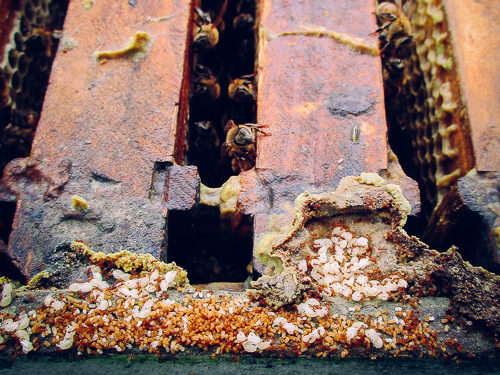
LFA do not disperse by flight, but a colony fragment of a few workers and one reproductive queen is all that is needed to establish themselves at a new location. A viable colony fragment is able to fit comfortably into an area smaller than a match-box and is thus easily hidden within cargo, baggage, or other possessions. Increasing rates and volumes of human commerce provide the vector needed for LFA to move from location to location with little effort. This feature allows them to spread over long distances, or shorter distances through the movement of items such as potted plants, produce, and other high risk items.
